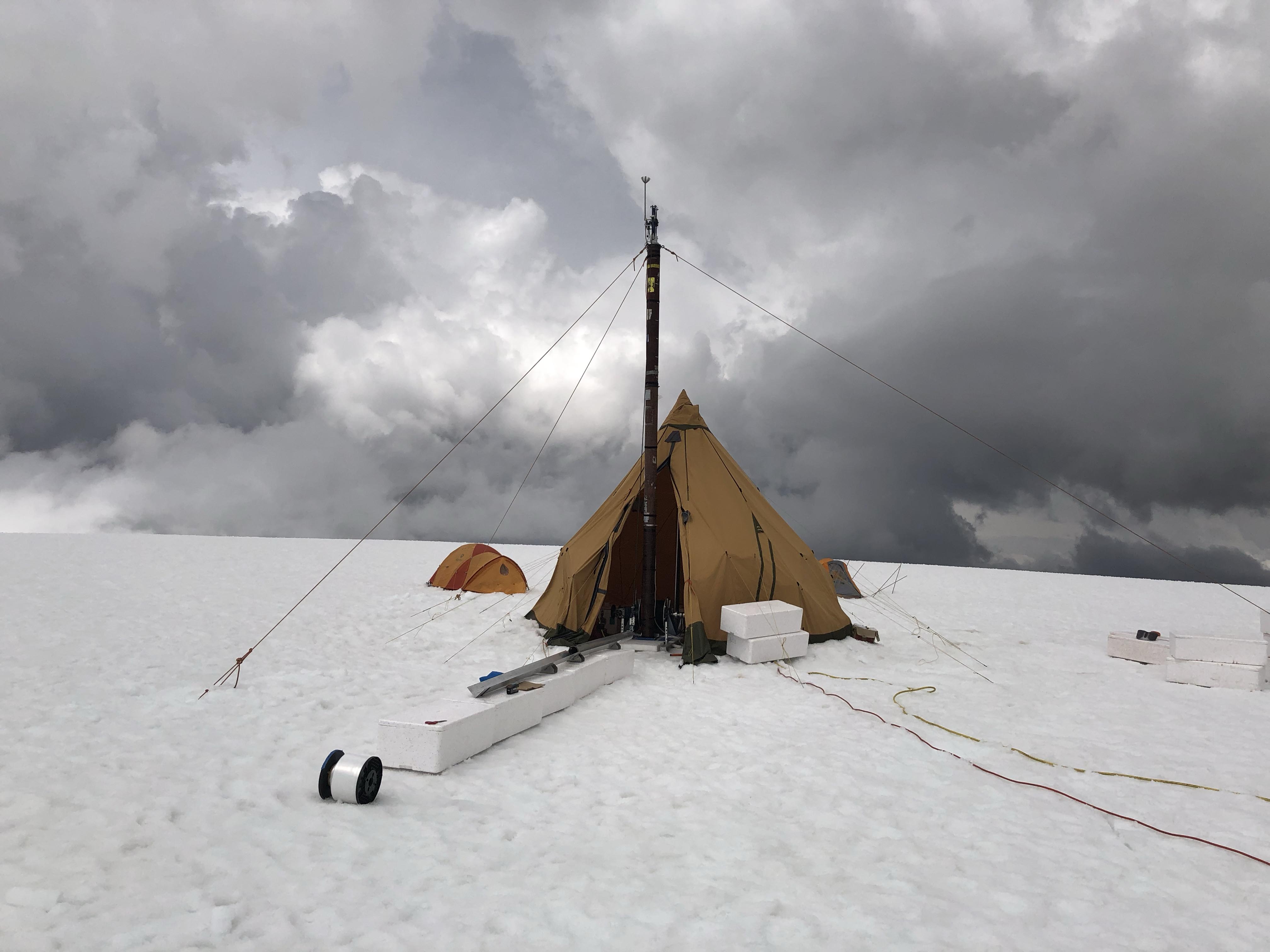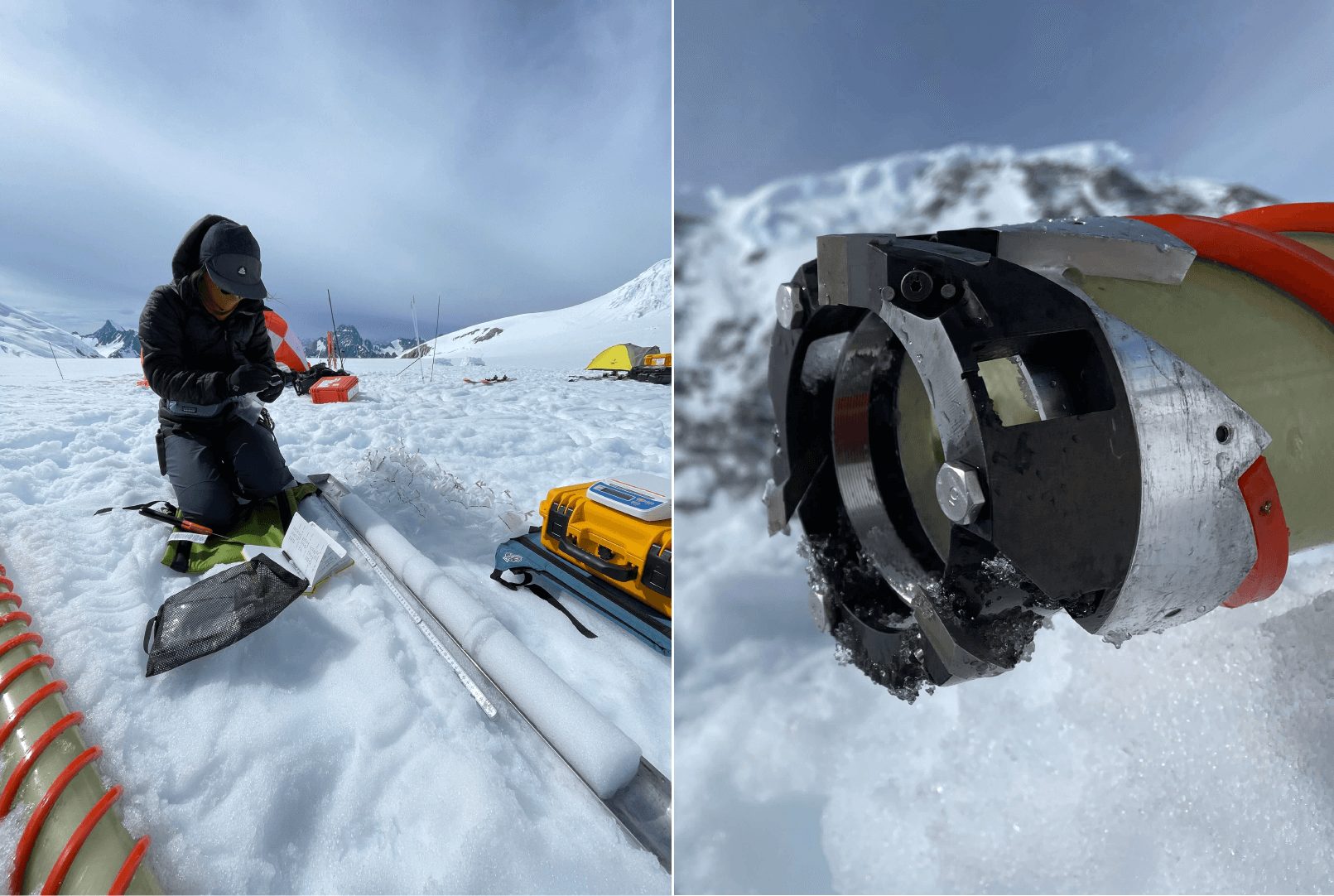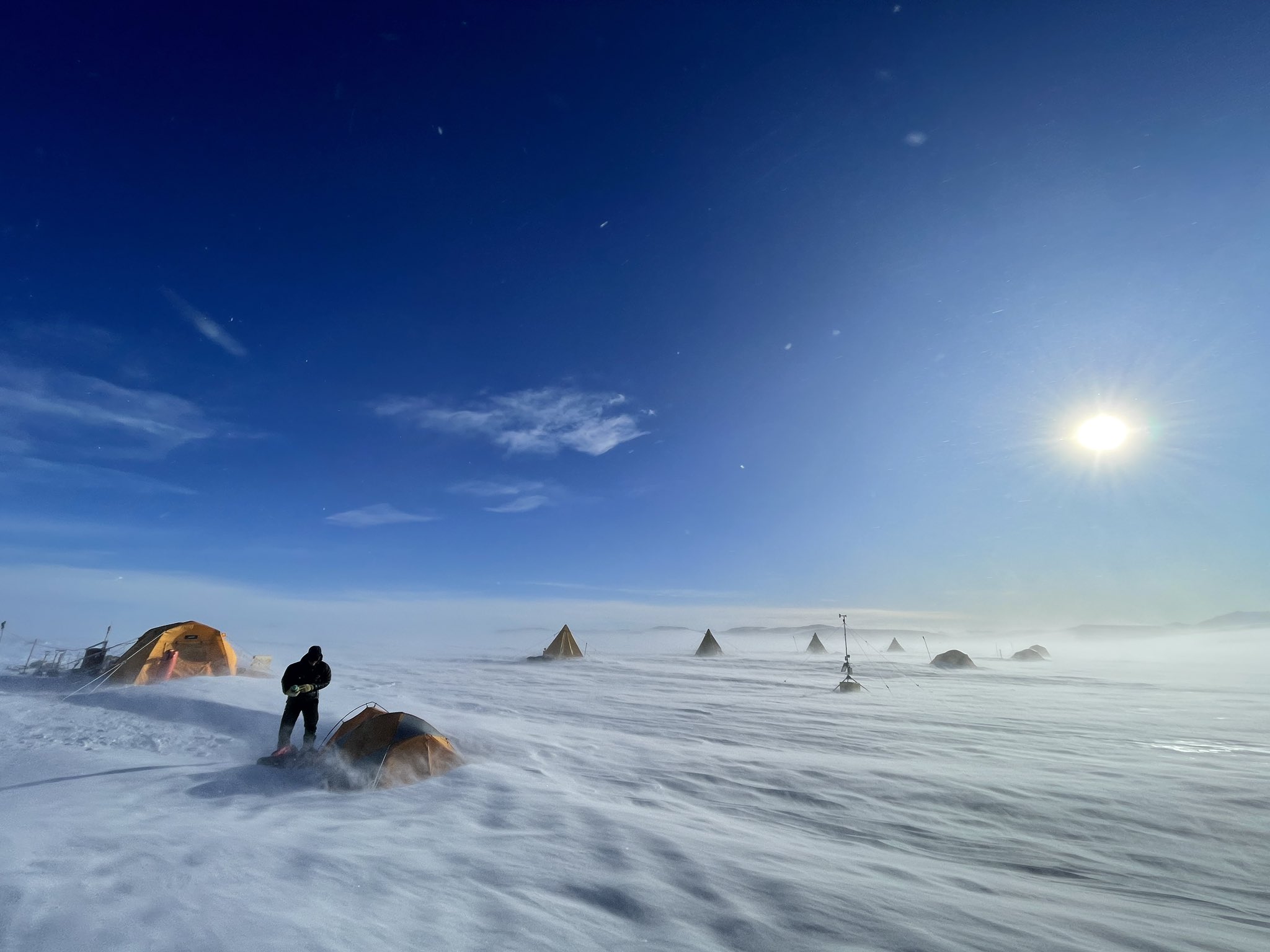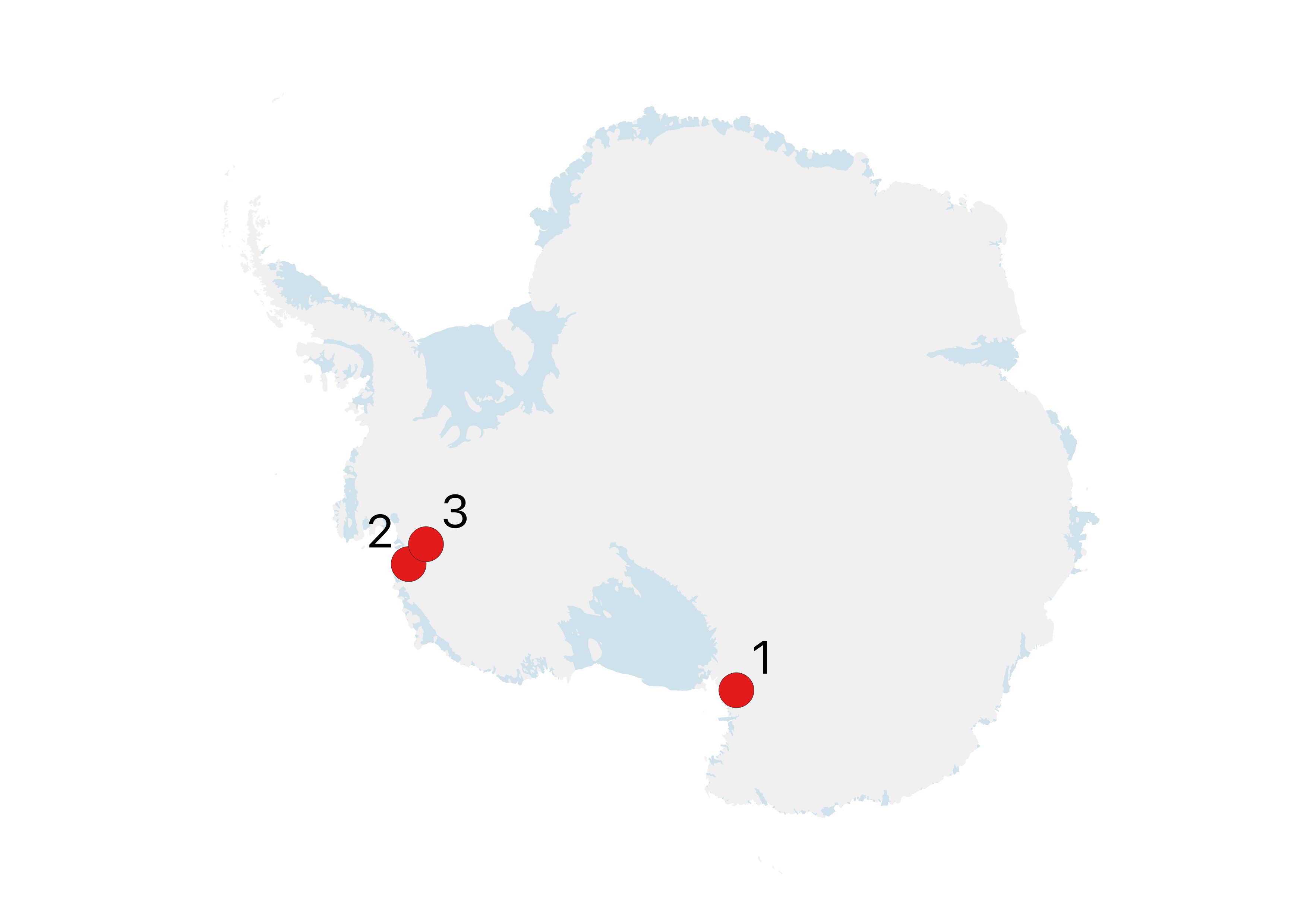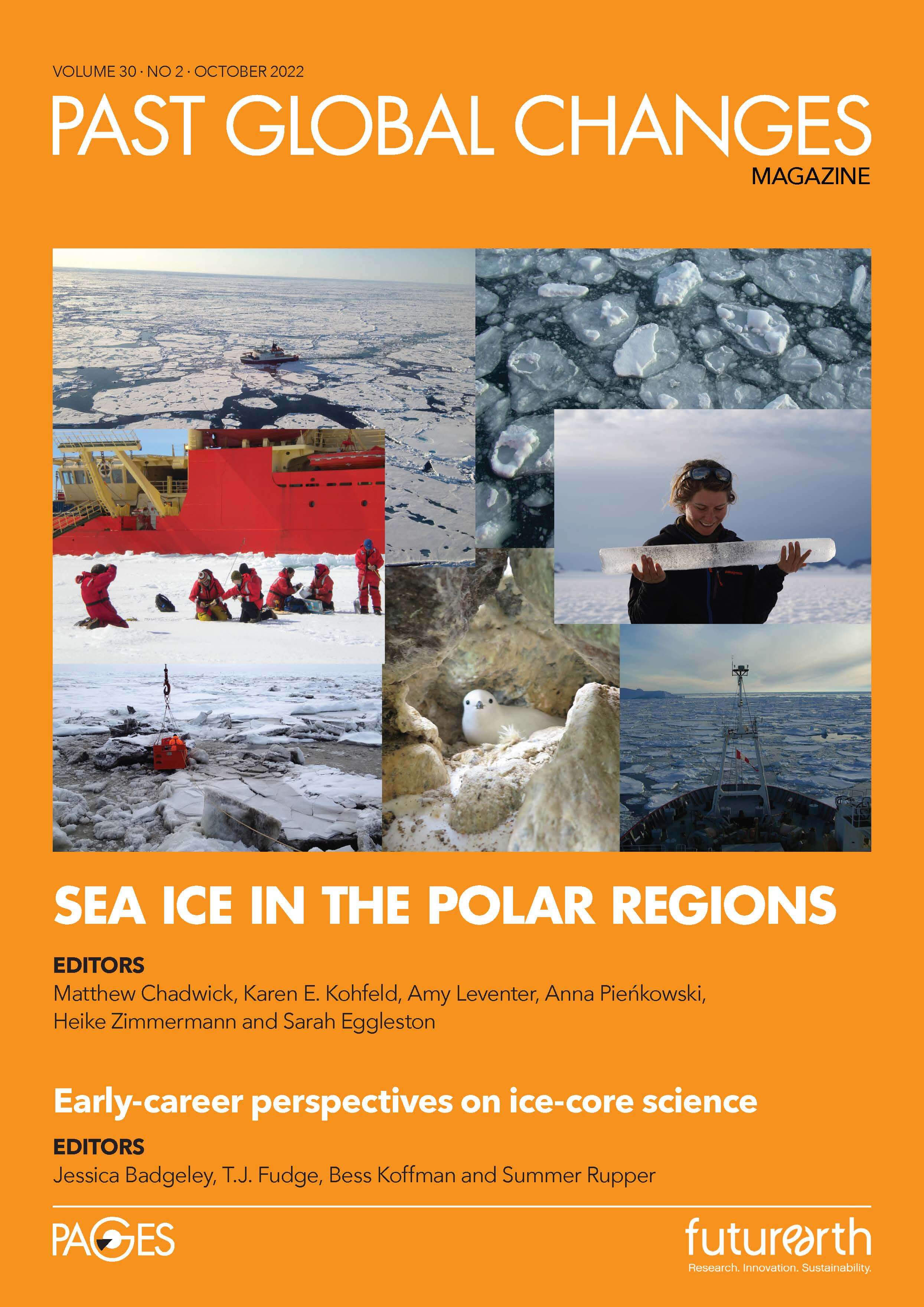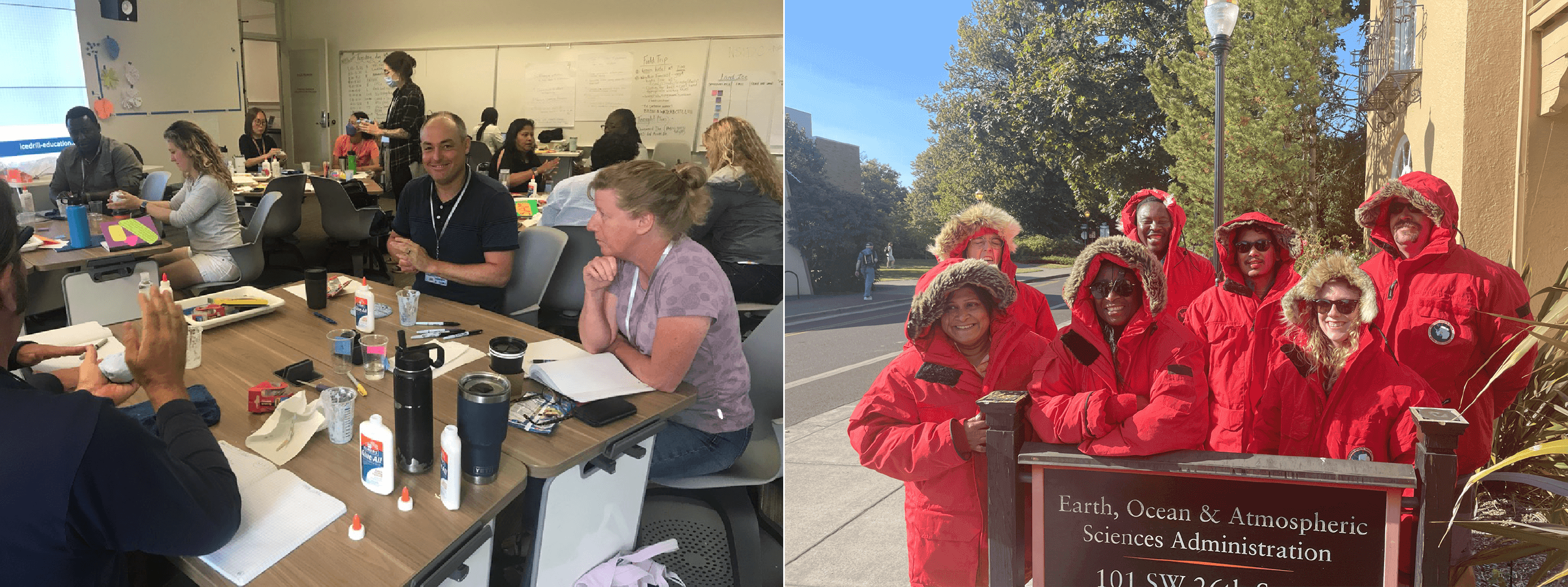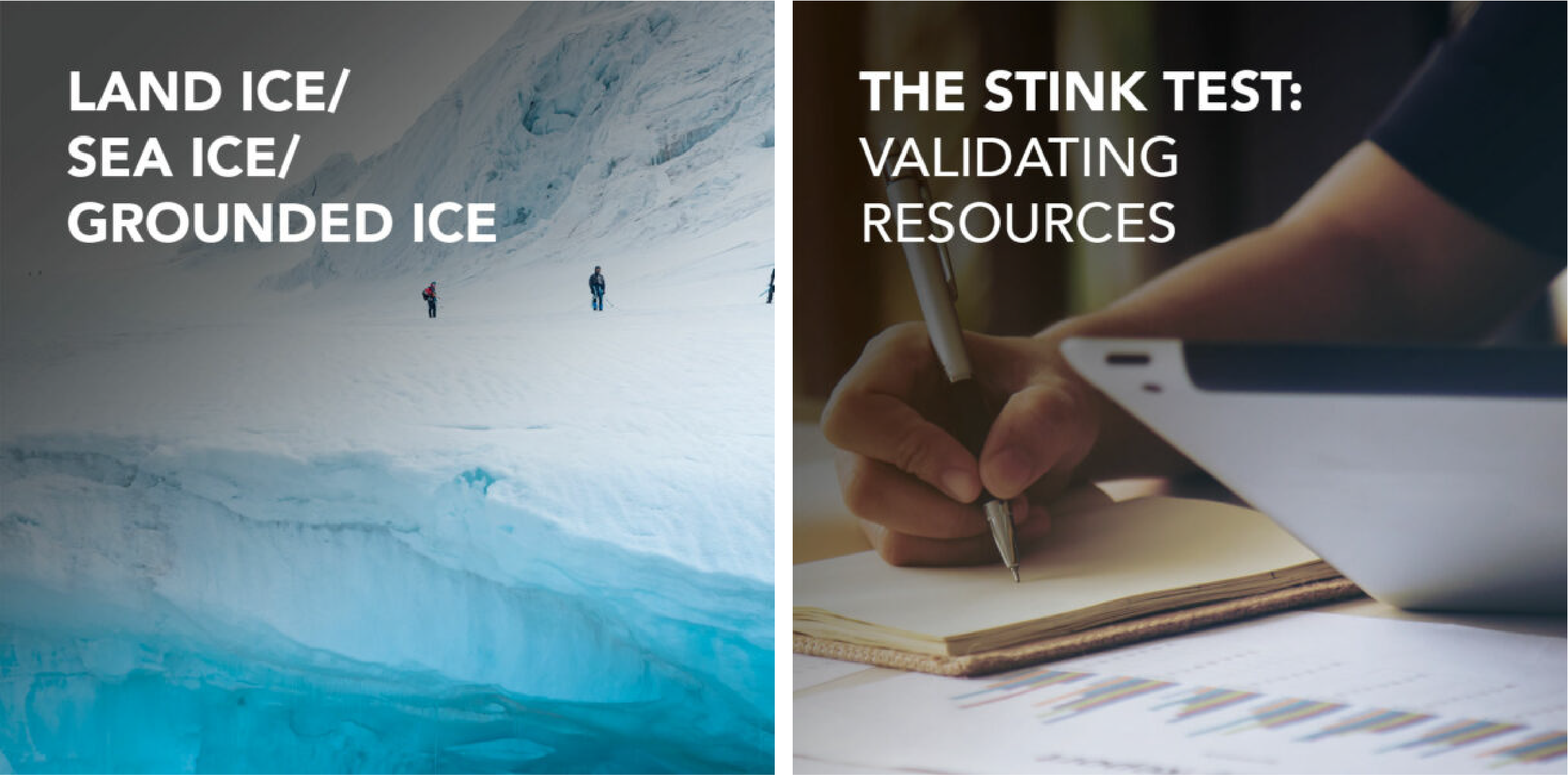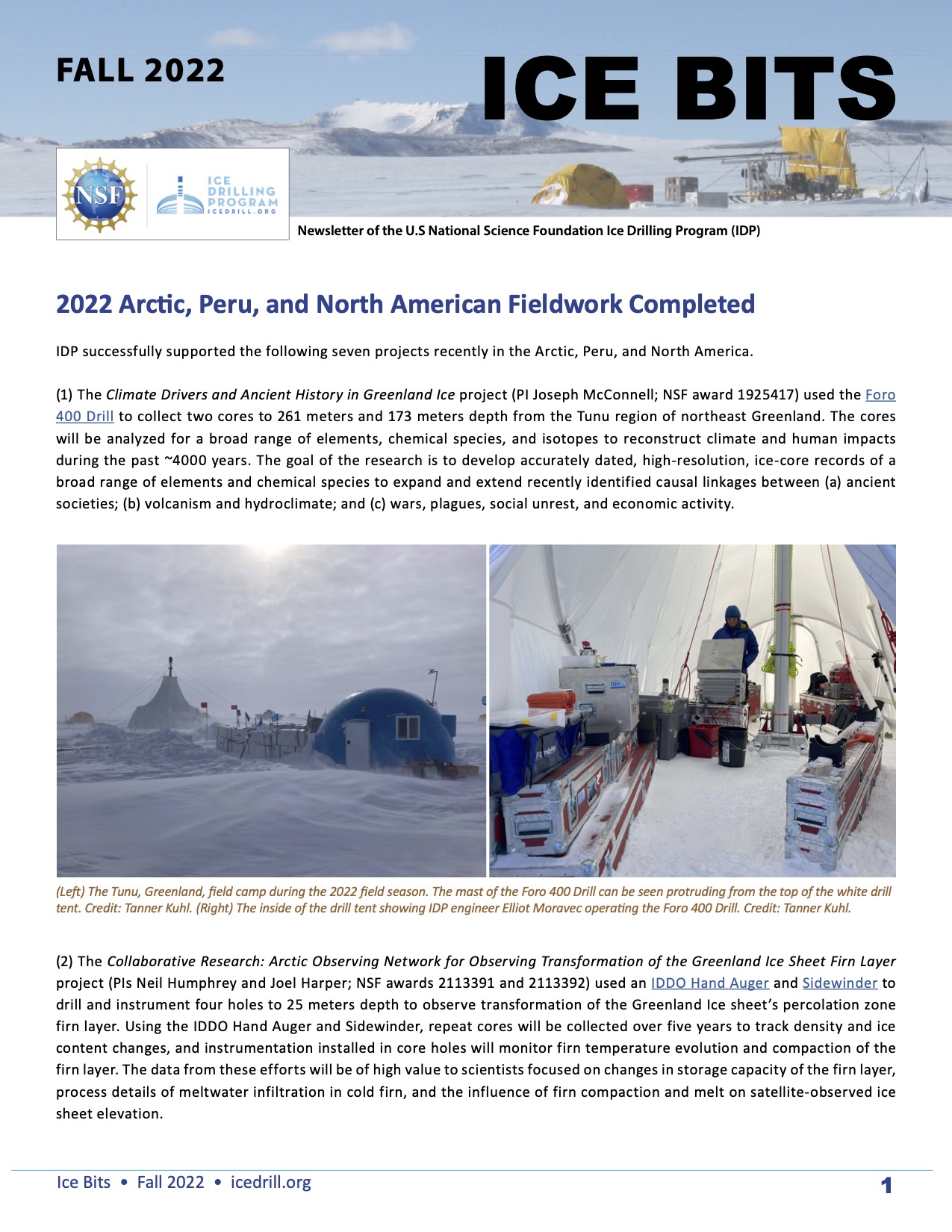2022 Arctic, Peru, and North American Fieldwork Completed
- Fieldwork
IDP successfully supported the following seven projects recently in the Arctic, Peru, and North America.
(1) The Climate Drivers and Ancient History in Greenland Ice project (PI Joseph McConnell; NSF award 1925417) used the Foro 400 Drill to collect two cores to 261 meters and 173 meters depth from the Tunu region of northeast Greenland. The cores will be analyzed for a broad range of elements, chemical species, and isotopes to reconstruct climate and human impacts during the past ~4000 years. The goal of the research is to develop accurately dated, high-resolution, ice-core records of a broad range of elements and chemical species to expand and extend recently identified causal linkages between (a) ancient societies; (b) volcanism and hydroclimate; and (c) wars, plagues, social unrest, and economic activity.
(2) The Collaborative Research: Arctic Observing Network for Observing Transformation of the Greenland Ice Sheet Firn Layer project (PIs Neil Humphrey and Joel Harper; NSF awards 2113391 and 2113392) used an IDDO Hand Auger and Sidewinder to drill and instrument four holes to 25 meters depth to observe transformation of the Greenland Ice sheet’s percolation zone firn layer. Using the IDDO Hand Auger and Sidewinder, repeat cores will be collected over five years to track density and ice content changes, and instrumentation installed in core holes will monitor firn temperature evolution and compaction of the firn layer. The data from these efforts will be of high value to scientists focused on changes in storage capacity of the firn layer, process details of meltwater infiltration in cold firn, and the influence of firn compaction and melt on satellite-observed ice sheet elevation.
(3) The NSFGEO-NERC: Collaborative Research: Chemistry and Biology under Low Flow Hydrologic Conditions Beneath the Greenland Ice Sheet Revealed through Naturally Emerging Subglacial Water project (PIs Kathy Licht and Trinity Hamilton; NSF awards 2039854 and 2039582) is studying the deposits of freeze-on ice (known as naledi) that form over winter at land-terminating outlets of the Greenland Ice Sheet. In this multi-year field campaign, the researchers are using the SIPRE Hand Auger to extract multiple intact short cores from sites in West Greenland with naledi at the ice margin. The cores will be analyzed in terms of the structure of the ice and sediment content, mineralogy of the sediment, stable isotopes, chemistry of salts and solutes, and microbiology. The goal is to use these cores to extract information about seasonal changes in the chemical and biological processes occurring under the Greenland Ice Sheet and thereby further elucidate the connections between glacial hydrology and subglacial biogeochemistry.
(4) The Collaborative Research: P2C2--Ultra-High-Resolution Investigation of High Andean Snow and Ice Chemistry to Improve Paleoclimatic Reconstruction and Enhance Climate Prediction project (PIs Paul Mayewski and Anton Seimon; NSF awards 1600018 and 1566450) is investigating past and modern change in climate over Peru and Bolivia using snow and ice samples to improve predictions for future climate. Instrumental records of climate and environmental variability from the region are sparse. However, ice cores from Central Andean glaciers can provide a source of high-resolution records of past climate dynamics and chemistry of the atmosphere extending back in time for centuries to millennia. Using the Electrothermal Drill, an IDP engineer and the researchers retrieved a 128-meter core to bedrock from the Quelccaya Ice Cap in Peru. The goal of the research is to combine advances in ice core sampling technology, knowledge of Andean storm event meteorology, cyberinfrastructure, and climate modeling and analysis to fresh snow, snow pits and ice core data from Peru and Bolivia to help assess the impact of natural and human-induced physical and chemical climate change at the storm-scales that impact day to day and season to season events.
(5) The Collaborative Research: P2C2--Ice Core and Firn Aquifer Studies at Combatant Col, British Columbia, Canada project (PIs Peter Neff and Eric Steig; NSF awards 2002441 and 2001961) used an IDDO Hand Auger to collect shallow cores from their field site at Combatant Col, British Columbia, Canada. The team also conducted radar work at the site and is scheduled to return to the field site during the 2023 field season, during which they will use the Electrothermal Drill to retrieve a core to bedrock. In combination with high-resolution radar imaging, the core from Combatant Col will be used to determine whether the observed firn-aquifer at this site (where liquid water is stored perennially above the firn-ice transition) has been a persistent feature at the site or whether it has formed recently, and to determine its impact on glacier energy balance and dynamics.
(6) The Reconstructing Ancient Human and Ecosystem Responses to Holocene Climate Conditions project (PIs Dave McWethy and Joseph McConnell; NSF award 1832486) is reconstructing Holocene climatic conditions to better understand human adaptation and response to past environmental variability. The researchers are using the assemblages of plant, animal, geologic, and archaeological material emerging from melting ice-patches in higher-elevation areas to learn about past environmental conditions and human use of alpine resources. The investigators are using an array of archaeological artifacts, ancient wood, and environmental and climatic proxies (e.g., oxygen isotopes, black carbon, continental dust, charcoal, and pollen) from ice cores collected from Northern Rocky Mountain ice-patches to better understand human use of alpine environments during periods of dramatic environmental change. The investigators used the Chipmunk Drill to collect the ice cores.
(7) The NSFGEO-NERC: Collaborative Research: Two-Phase Dynamics of Temperate Ice project (PIs Lucas Zoet and Neal Iverson; NSF awards 1643123 and 1643120) is investigating how ice infiltration into subglacial sediments affects glacier slip. The fastest-changing regions of the Antarctic and Greenland Ice Sheets that contribute most to sea-level rise are underlain by soft sediments that facilitate glacier motion. Glacier ice can infiltrate several meters into these sediments, depending on the temperature and water pressure at the glacier’s base. To understand how ice infiltration into subglacial sediments affects glacier slip, the researchers are conducting laboratory experiments under relevant temperature and pressure conditions and comparing the results to state-of-the-art mathematical models. The researchers used the Chipmunk Drill to collect small-diameter ice cores from their sheared lab ice for further testing.
Field Support to Antarctic 2022-2023 Projects
- Fieldwork
IDP is providing support to the following three projects during the 2022-2023 Antarctic field season:
(1) The Collaborative Research: Snapshots of Early and Mid-Pleistocene Climate and Atmospheric Composition from the Allan Hills Blue Ice Area project (PIs John Higgins, Ed Brook, Paul Mayewski, and Jeff Severinghaus; NSF awards 1744993, 1745006, 1745007, and 1744832) will collect new ice cores from the Allan Hills Blue Ice Area. Bubbles of ancient air trapped in ice cores have been used to directly reconstruct atmospheric composition, and its links to Antarctic and global climate, over the last 800,000 years. Previous field expeditions to the Allan Hills Blue Ice Area, Antarctica, have recovered ice cores that extend as far back as 2.7 million years. These ice cores extend direct observations of atmospheric carbon dioxide and methane concentrations and indirect records of Antarctic climate into a period of Earth’s climate history that represents a plausible geologic analog to future anthropogenic climate change. This project is returning to the Allan Hills Blue Ice Area to recover additional ice cores using the Foro 400 Drill and Blue Ice Drill. The climate records developed from these ice cores will provide new insights into the chemical composition of the atmosphere and Antarctic climate during times of comparable or even greater warmth than the present day.
(2) The NSF-NERC: Geological History Constraints on the Magnitude of Grounding Line Retreat in the Thwaites Glacier System project (PI Ryan Venturelli; NSF award 1738989) contributes to the joint initiative launched by the U.S. National Science Foundation (NSF) and the U.K. Natural Environment Research Council (NERC) to substantially improve decadal and longer-term projections of ice loss and sea-level rise originating from Thwaites Glacier in West Antarctica. The project will provide a record of regional sea-level change by establishing chronologies for raised marine beaches as well as the timing and duration of periods of retreat of Thwaites Glacier during the past 10,000 years by sampling and dating bedrock presently covered by Thwaites Glacier via subglacial drilling. Together with climatic and oceanographic conditions from other records, these will provide boundary conditions for past-to-present model simulations as well as those used to predict future glacier changes under a range of climate scenarios. For its second field season, the project will utilize the Badger-Eclipse Drill and Winkie Drill to obtain subglacial bedrock from sites where ice thickness is dynamically linked to grounding-line position in the Thwaites system (specifically in the Hudson Mountains and near Mount Murphy). Observation of significant cosmogenic-nuclide concentrations in these samples would provide direct, unambiguous evidence for past episodes of thinning linked to grounding-line retreat as well as constraints on their timing and duration.
(3) The NSF-NERC: Ground Geophysics Survey of Thwaites Glacier project (PI Sridhar Anandakrishnan; NSF award 1738934) contributes to the joint initiative launched by the U.S. National Science Foundation (NSF) and the U.K. Natural Environment Research Council (NERC) to substantially improve decadal and longer-term projections of ice loss and sea-level rise originating from Thwaites Glacier in West Antarctica. The project’s objectives are to learn whether basal conditions allow for rapid retreat of the Thwaites Glacier grounding line or whether retreat may re-stabilize near its current grounding line. These objectives will be achieved by using dedicated ice-flow modeling to guide targeted field surveys and experiments over two seasons, and to measure the most important unknown quantities and incorporate them into the models. Numerical models will be used to generate hypotheses for basal conditions that are testable through geophysical surveys and to project future behavior of Thwaites Glacier after assimilating the resulting data. The geophysical methods include seismic, radar, gravity, and electrical surveys that together allow for a fuller bed characterization. The project will conduct field surveys in areas representative of different parts of the glacier, including across the margins, near the grounding line, and along the central axis of the glacier into its catchment. The Rapid Air Movement (RAM) Drill will be used to create the shot holes required for the seismic measurements.
Ice Core Articles for Undergraduate Students and Ice Core-Adjacent Researchers
- Education/ Outreach
- Meetings/ Workshops
- Publications
In 2022, the US National Science Foundation, via the Ice Drilling Program, funded a workshop for US early-career researchers to become more involved in the ice-core community. The Ice Core Early Career Researchers Workshop (ICECReW) was held January 5-8, 2022, in Salt Lake City, Utah, and online. Participants met with established researchers to better understand outcomes of and resources available from past ice core projects, learn about opportunities to engage with future efforts, and connect with potential collaborators. Participants also produced the following series of articles, published in Past Global Changes Magazine, to help communicate ice core science to undergraduate students and ice core-adjacent researchers:
- Editorial: Early-career perspectives on ice-core science
- From drilling to data: retrieval, transportation, analysis, and long-term storage of ice-core samples
- Putting the time in time machine: Methods to date ice cores
- Our frozen past: ice-core insights into earth’s climate history
- Ice-core records of atmospheric composition and chemistry
- Fire trapped in ice: An introduction to biomass burning records from high-alpine and polar ice cores
- Ice-core records of human impacts on the environment
- The living record: considerations for future biological studies of ice cores
- Firn: Applications for the interpretation of ice-core records and estimation of ice-sheet mass balance
- What can deep ice, water, sediments, and bedrock at the ice–bed interface tell us?
- Ice-core constraints on past sea-level change
School of Ice 2023 Workshop
- Education/ Outreach
- Meetings/ Workshops
This summer, the School of Ice professional development workshop for college faculty and high school teachers who teach advanced science courses will be held at Dartmouth College, June 18-23, 2023. The application is available now. Information about the program can be found at icedrill-education.org.
IDP Education Resources Selected for Inclusion in CLEAN
- Education/ Outreach
Check out these two IDP resources for education that have recently been selected for inclusion in the CLEAN (Climate Literacy and Energy Awareness Network) digital collection of high-quality resources that address climate and energy-related topics:
- Land Ice/Sea Ice/Grounded ice: How does melting ice affect sea level?
- The Stink Test: Validating Resources
Digital educational resources selected for the CLEAN Collection are aligned with the Climate Literacy Essential Principles or Energy Awareness Principles and passed through an extensive peer-review process to verify the accuracy and currency of the science.
Center for Oldest Ice Exploration (COLDEX) REU Program
- Education/ Outreach
The Center for Oldest Ice Exploration (COLDEX) is excited to announce that applications are OPEN for the Summer 2023 COLDEX Research Experience for Undergraduates (REU) Program!
During the COLDEX REU experience, your students will work with ice core scientists and researchers to answer questions that will help in our mission to find the oldest ice in Antarctica and make important contributions to our understanding of Earth’s climate history.
Applications are open to current undergraduate students. Due to NSF funding, participants must be U.S. citizens or permanent residents. Note: this REU does not include travel to Antarctica.
Student participants will receive a $6,000 stipend over the course of 10 weeks (from June - August 2023). Students will be placed in a COLDEX laboratory, with full funding for travel to and from the host institution. Students will also be funded to present their research at the COLDEX annual meeting in Corvallis, Oregon, September 6 - 7, 2023.
Find out more about the COLDEX REU program and apply at coldex.org/reu or apply here: https://oregonstate.qualtrics.com/jfe/form/SV_daK395aMKNqqLCm?jfefe=new
Applications are due February 1, 2023, at 11:59 pm Eastern Time.
For questions about the REU program, contact Dr. Kristen Rahilly at kristen.rahilly@oregonstate.edu.
Ice Core Sessions at AGU Fall Meeting
- Meetings/ Workshops
For those attending the AGU Fall Meeting, be sure to check out these ice core sessions on Wednesday, December 14, in the Ice Core Records of Environmental Change session organized by Vasilii Petrenko (University of Rochester), Eric Steig (University of Washington), Bess Koffman (Colby College), and Kathleen Wendt (Oregon State University).
| C32D Ice Core Records of Environmental Change I Poster https://agu.confex.com/agu/fm22/meetingapp.cgi/Session/158571 | Wed, 14 December 2022 9-12:30 Central Time McCormick Place - Poster Hall, Hall A (South, Level 3) |
| C34C Ice Core Records of Environmental Change II Online Poster Discussion https://agu.confex.com/agu/fm22/meetingapp.cgi/Session/175616 | Wed, 14 December 2022 (1:45 to 2:45 Central) Online Only |
| C36B Ice Core Records of Environmental Change III Oral https://agu.confex.com/agu/fm22/meetingapp.cgi/Session/175609 | Wed, 14 December 2022 4:45-6:15 Central McCormick Place - S505ab (South, Level 5) |
Acknowledgment of IDP in Publications
- Publications
If you receive any support from IDP, we kindly request that you acknowledge IDP in any resultant publications or articles with the following statement: “We thank the U.S. Ice Drilling Program for support activities through NSF Cooperative Agreement 1836328.” If you have any questions, please contact us at IceDrill@Dartmouth.edu.
Ice Drilling Support for NSF Polar Proposals
- Funding Opportunities/ Solicitations
- Education/ Outreach
If you are preparing a National Science Foundation (NSF) proposal that includes any kind of support from IDP, you must include a Letter of Support from IDP in the proposal.
Researchers are asked to provide IDP with a detailed support request three weeks prior to the date the Letter of Support is required. Early submissions are strongly encouraged.
Scientists who seek to include IDP education and outreach activities associated with U.S. ice coring or drilling science projects should contact Louise Huffman at Louise.T.Huffman@Dartmouth.edu during their proposal preparation stage.
For further information on requesting IDP support, visit our website at https://icedrill.org/requesting-field-support or contact us at IceDrill@Dartmouth.edu.

